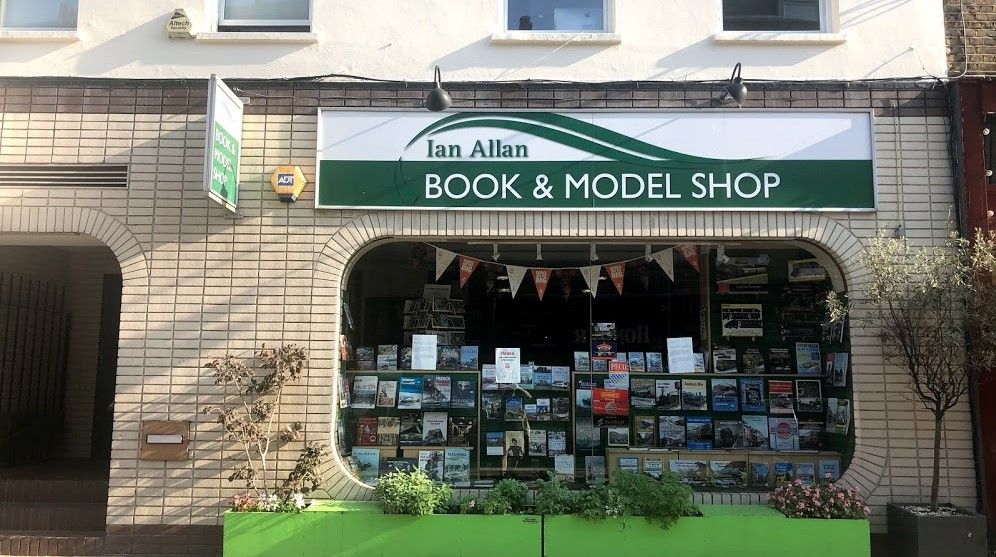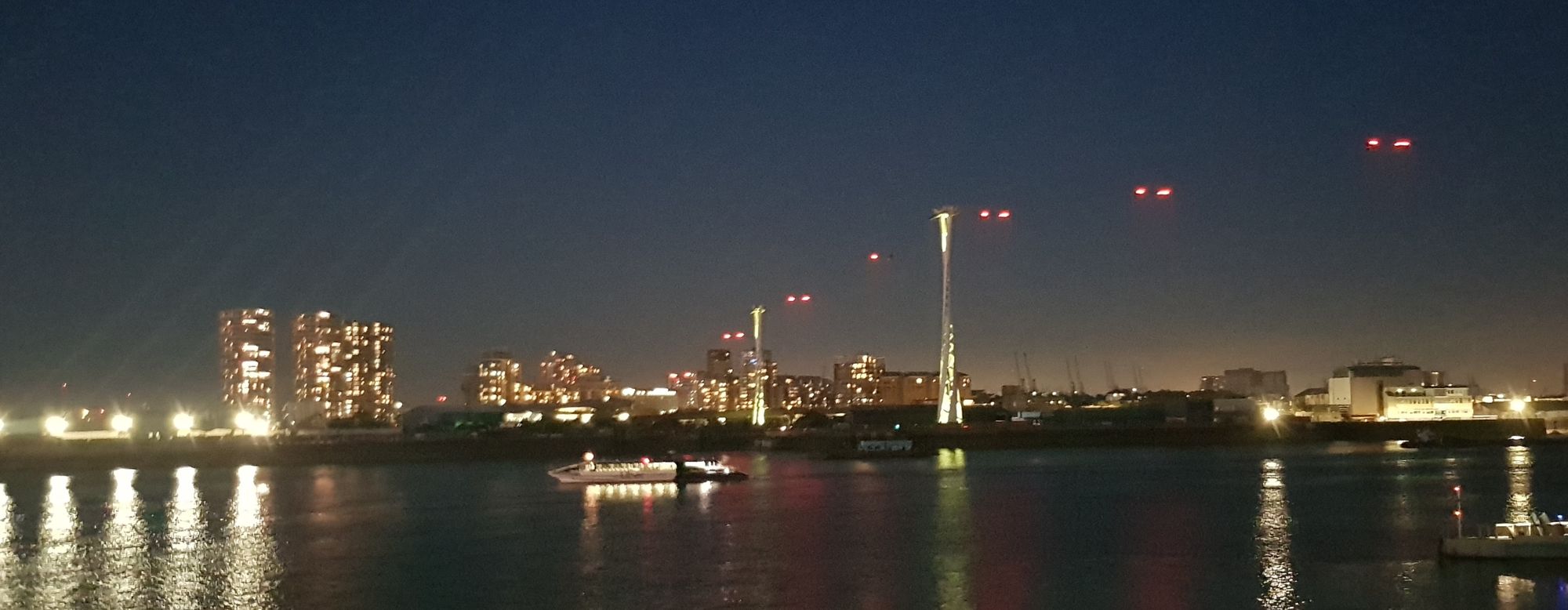Watch the birdie
I was adamant that Civic Revival was not going to be about London. The Big Smoke gets quite enough attention as it is, and is quite capable of looking after itself.
This verdict also applies to its civic activists – some of the most effective political operators anywhere. Just as during the Blitz, London’s St Paul’s Cathedral did not just miraculously survive, it was actively defended, so during the onslaughts of various property development booms over the decades and centuries London’s most charming and quirky neighbourhoods and green spaces survived not by accident, but by means of local civic action.
So, there is always something to learn from London, but the metropolis hardly needs the attention or assistance of a project like Civic Revival. Or does it?
The circumstances of coronavirus are a perfect storm for London’s economy and property market. To function, London’s densely packed central area is entirely reliant on people cramming themselves together in offices and meeting spaces of all types, as well as moving around sardine-style on buses and trains - the very things people don’t want to do right now. For however long social distancing needs to continue as a phenomenon, the capital city is in trouble: it can’t function in the way that made it successful.
The trillion-dollar question is whether things will ever go back to the way they were before, as and when the need for social distancing ends. Is London’s decades-long bull run about to run out? Of course it is too early to say, but it seems unlikely that anyone is going to be willing to pay the sky-high rents for office and retail space that London commercial landlords had become accustomed to, for the foreseeable future. A big commercial property crash is probably coming. What would this mean for London in the civic sense – would that be all bad news, or might some good come out of it?
Why should the rest of the country care? Well, Britain’s tax base has been built around London for many years. Gordon Brown and Peter Mandelson were relaxed about City slickers getting filthy rich so long as it produced tax revenues to pay for public services in the rest of the country: London was the goose that laid the golden eggs. Whereas others have argued for years, also persuasively, that London is more like the cuckoo in the nest, elbowing out the UK’s other regions and nations to gobble up all the available sustenance.
Now maybe there needs to be a new angle in this debate: is London in fact about to become the famous Norwegian Blue parrot? Not resting, not pining for the fjords, but bereft of life, ceased to be: an ex-parrot?
Whichever way, what happens next in London, how it changes in response to coronavirus and Brexit, and whether it continues to thrive and/or overshadow everywhere else - or otherwise - is of great interest to the rest of the country and to Civic Revival.
Singapore noodling around
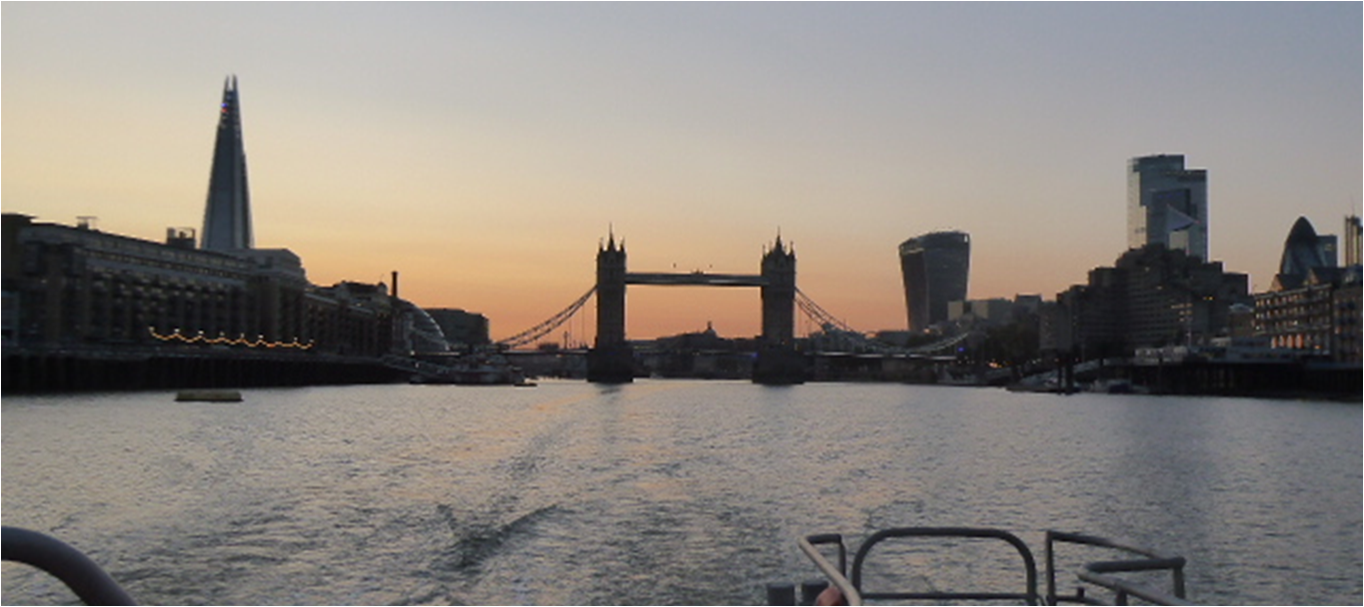
This wander comprises some impressions gleaned from an early evening river bus trip along the Thames with Civic Revival’s Peter Stonham during September 2020’s Indian summer, in the period between what may prove to be the two big waves of the coronavirus pandemic. The sailing was from Waterloo to North Greenwich, home of the O2 Arena, formerly known as the Millennium Dome. All true Londoners are deeply proud of their river, the historic lifeblood of their city, and it remains a unique environment from which to view the ongoing development of the city’s story.
Before coronavirus struck, going into the 2019 general election, Boris Johnson’s post-Brexit economic vision for London within ‘Global Britain’ was characterised as ‘Singapore-on-Thames’. The economic vision for the rest of the country was to be ‘levelled up’ to the standard of Singapore/London, by means that were not fleshed out in detail.
On election day, this vision proved extremely popular almost everywhere across England, except in London. The man who had been Mayor of London for eight years won the day. Now, with the end of the Brexit transition period looming, it is wise to think about what Singapore-on-Thames may mean in practice.
Waterloo Sunset
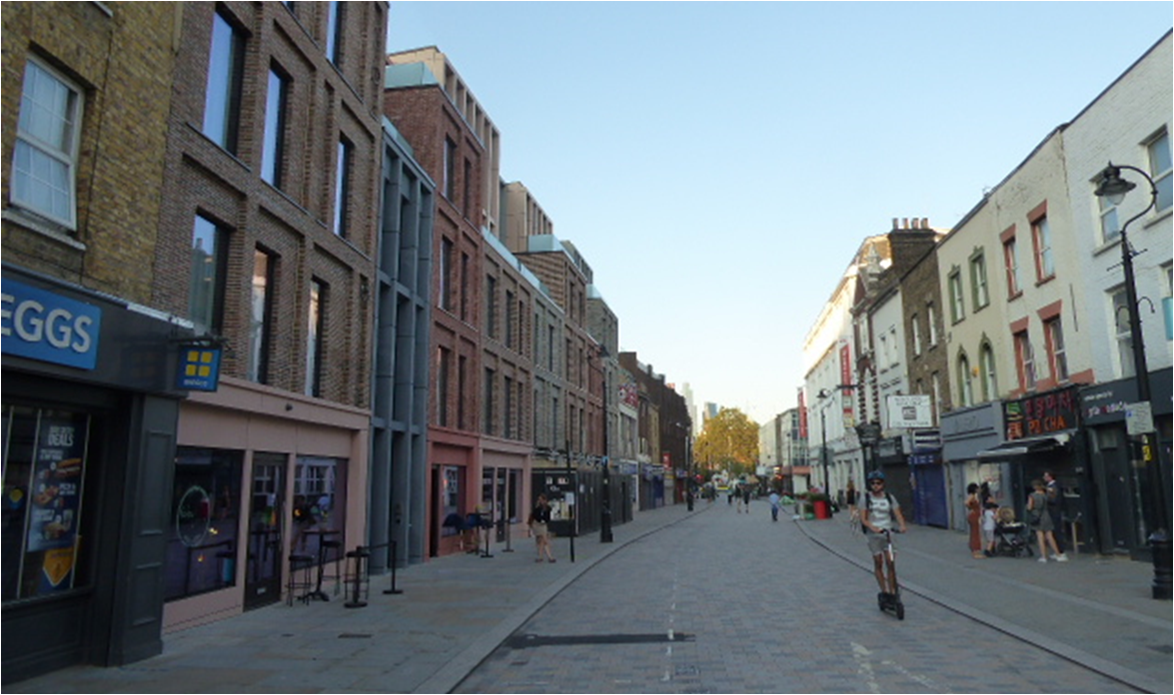
The wander began for me at an eerily quiet Euston station, but started in earnest in Waterloo’s Lower Marsh, a classic London ‘street market street’, in the shadow of London’s Waterloo station.
Lower Marsh can be viewed as a tiny microcosm of London’s ‘soft power’ – its cultural appeal to talented young people from across the whole world: a city for learning, working, hanging out, meeting others, trying stuff. As Ken Livingstone put it in his famous speech after the 7/7 bombings in 2005: “they choose to come to London, as so many have come before because they come to be free, they come to live the life they choose, they come to be able to be themselves”.
Like its much bigger counterparts in Camden or Shoreditch, Lower Marsh is no great architectural shakes; it’s a jumble, a bit scruffy, but it somehow manages to be funky and yet simultaneously comfy and reassuring. It’s chill, you might say.
Just a few doors down from the low key but effortlessly cool Café del Marsh stands the world’s greatest emporium for trainspotters, the Ian Allan Bookshop. A Tardis-like shop, it contains aisle upon aisle of shelves crammed with some of the most specialist and obscure magazines and books ever published – some even written by directors of Civic Revival! The kind of place that, iterated across a thousand other particular hobbies and interests, made London a worldwide mecca for specialist shopping.
London’s genius is that the trainspotters coexist happily with the young foreign students, the oldskool cockney geezers, the actors resting between gigs, the skateboarding youths from the nearby estates, and the Surrey commuters having a quick one before going home: each tribe leaving the other to their own business, all living and letting live.
Or it was. Pre-coronavirus, the biggest problem Lower Marsh was facing was the extermination of its chill vibe by property developers. This issue deserves (and may get) a Civic Revival article of its own, but in brief, the very quality that made Lower Marsh charming was its traditional fine-grained urban design: a narrow street with many narrow shop units fronting on to it.
A new café opening up could only manage to squeeze in a handful of tables, the basis for a small business providing a modest living within a complex, diverse ecosystem, but not the basis for making a fortune. However, the charm of the overall ecosystem becomes commodified into great expectations about property values and rents that can only be realised by new, bigger buildings with larger floorplates, and the rental out of those new premises to soulless chains. Rack-renting landlords are nothing new in London, but arguably the process had got out of hand as never before. By destroying the fine grain that underpinned the whole ecosystem, redevelopment was making the destruction of the ecosystem a one-way street, something that could not be repaired. Whilst the casual wandering visitor might find the place fun, the only question for the connoisseur of Lower Marsh was whether the place was well on the way to being ruined, or already ruined.
Such was the matter under debate over a craft ale in the back yard of the Café del Marsh. The ‘rule of six’ had just come into force that day. A happy reunion was under way, with tables of students in the tiny yard being swelled with new arrivals as time wore on, returnees from summer vacations all over the world. A legal case could be made that there were several groups of six, and that the new rule of six was not being breached. The case might even stand up in court – but would the virus itself recognise the verdict, and not spread? Your reporter didn’t stick around to find out, but instead, made his excuses and left.
Game of tag
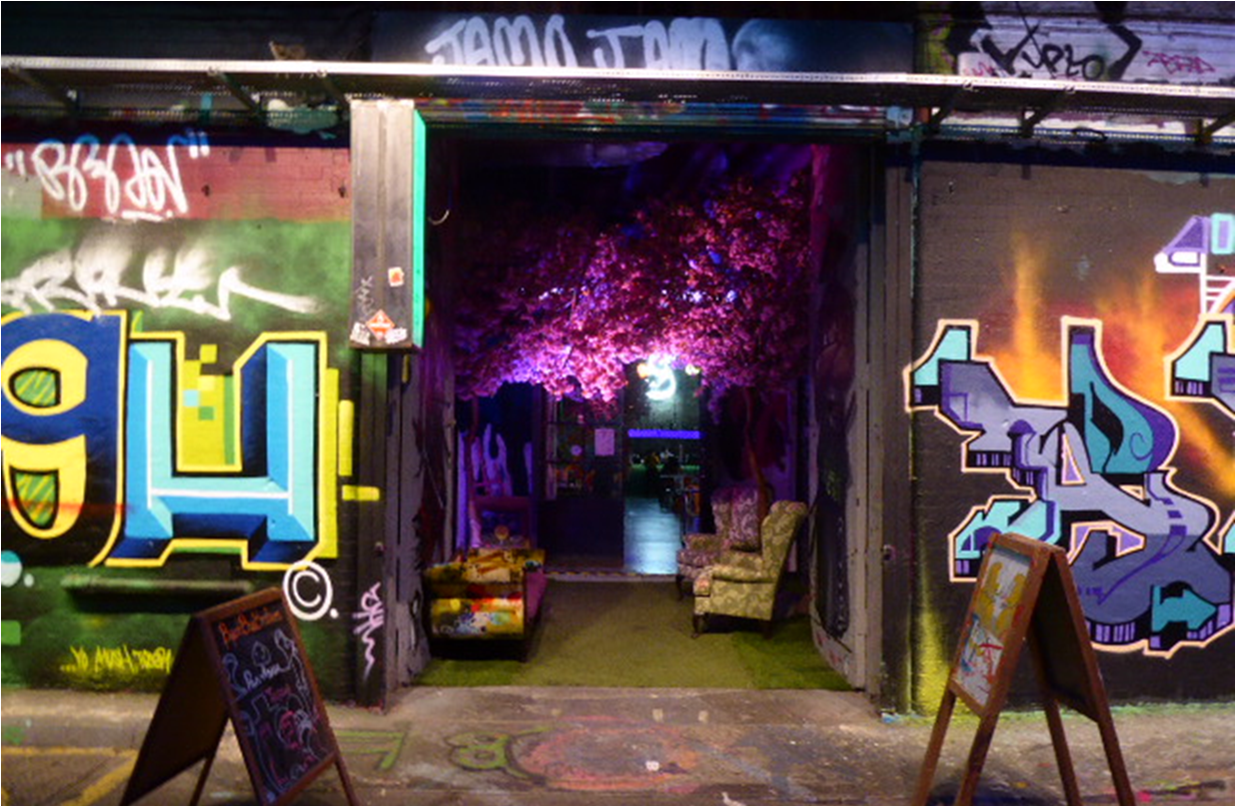
The route to Waterloo Pier, to catch the river bus, went via ‘the Leake Street arches’, a pedestrian route beneath the platforms of Waterloo station. The arches might not be everybody’s cup of tea, but they must be on the world top ten must-see bucket list of anybody interested in graffiti art. I would frankly be disappointed if the cognoscenti didn’t say that the Leake Street arches are not what they were, or have sold out in some way, but to this amateur’s eye the place was quite something.
The arches are tall and the tunnel is long, Waterloo Station having more platforms than any other station in Britain. Nevertheless, every square inch is covered in graffiti, both artworks and simpler tags. It is dark, and it has atmosphere – genuinely good works of graffiti art loom out at you from all angles in the gloom. New stuff is continuously being sprayed on top of older stuff, like Leonardo painting over old canvases. As far as I could tell, there is no commercialisation of any kind inside the arches: the canvas is free to spray on, and the place is free to visit. Kudos to the landlord for light-touch stewardship. No doubt, the value to the landlord is to put pictures of the arches in the brochure for their new development down the road. The commoditisation of edgy, and all that.
Leading off the main drag are spacious premises inside the individual brick railway arches. Inside one, a Polish restaurant; inside another, a board game café, with students playing chess, draughts or perhaps appropriately, Monopoly. The post-videogame generation, maybe.
The sun was sinking and the shadows of the London Eye giant wheel were lengthening across the Jubilee Gardens, site of the 1951 Festival of Britain, as we hastened to catch a river bus in time for what promised to be a memorable Waterloo Sunset on the river.
On a sunny afternoon any other year, the vicinity of Waterloo Pier is an almost ridiculous scrum of international tourists milling around before being fleeced of their cash for a ride on the wheel or a sail on one of the sightseeing boats. In 2020, the wheel was closed,and sat looking redundant and rather forlorn, a bit like its neighbour County Hall has for the past 35 years, since being stripped of its role as the centre of London local government.
The floating pier itself was unstaffed and spookily quiet. But, I thought to myself, I don't feel afraid; as long as I gaze on Waterloo sunset, I am in paradise.
Uber Boats
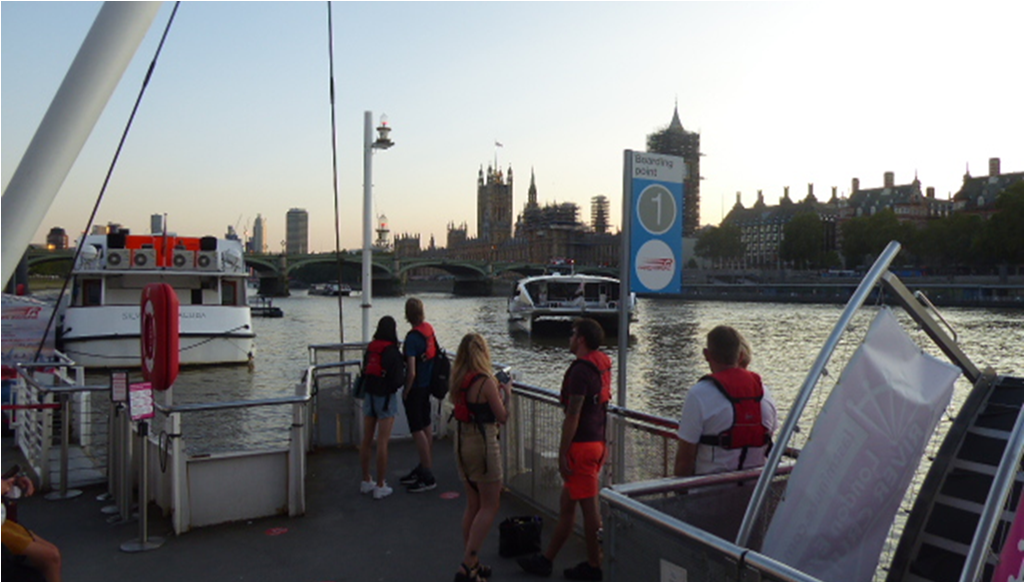
We were looking for the Thames Clippers of Transport for London’s London River Services, which were rumoured to have been back up and running all summer, after a brief closure during the strictest period of lockdown. But all that could be found were adverts for ‘Uber Boats’. We eventually deciphered that Uber Boats were in fact ‘Uber Boats by Thames Clippers’ – a sponsorship deal had evidently been struck. It was the same fleet of sleek catamarans as before, just painted black and with Uber written on the side, a floating billboard. The TfL river services are difficult to run profitably at the very best of times, and so all sponsorship revenues are gratefully received, no doubt.
The Woolwich Arsenal service was a few minutes away; we decided to take it as far as North Greenwich, and the former Millennium Dome: a sail that would take us past the Houses of Parliament, the centre of sovereign power in the land, clad in scaffolding, and calling at a roll call of London iconic sights and greatest hits of 40+ years of Thames riverside regeneration: Embankment, Blackfriars, Bankside for Tate Modern, London Bridge City, Tower of London, St Katharine’s Dock, Canary Wharf, Greenland Dock, Masthouse Terrace, and historic Greenwich.
The fare was significantly more expensive than taking the tube, but as a joyride, what a bargain. The Clippers were built for commuting, not sightseeing, and they have a very nice, plush interiors with plenty of seats and a bar for refreshments. But with London’s office workers still working from home, the seats were mostly empty. Most people were crammed in on to the small outside deck seating at the stern, and looking out for the sights - with the river breeze hopefully making up for lapses in mask-wearing and social distancing.
The great FIRE of London
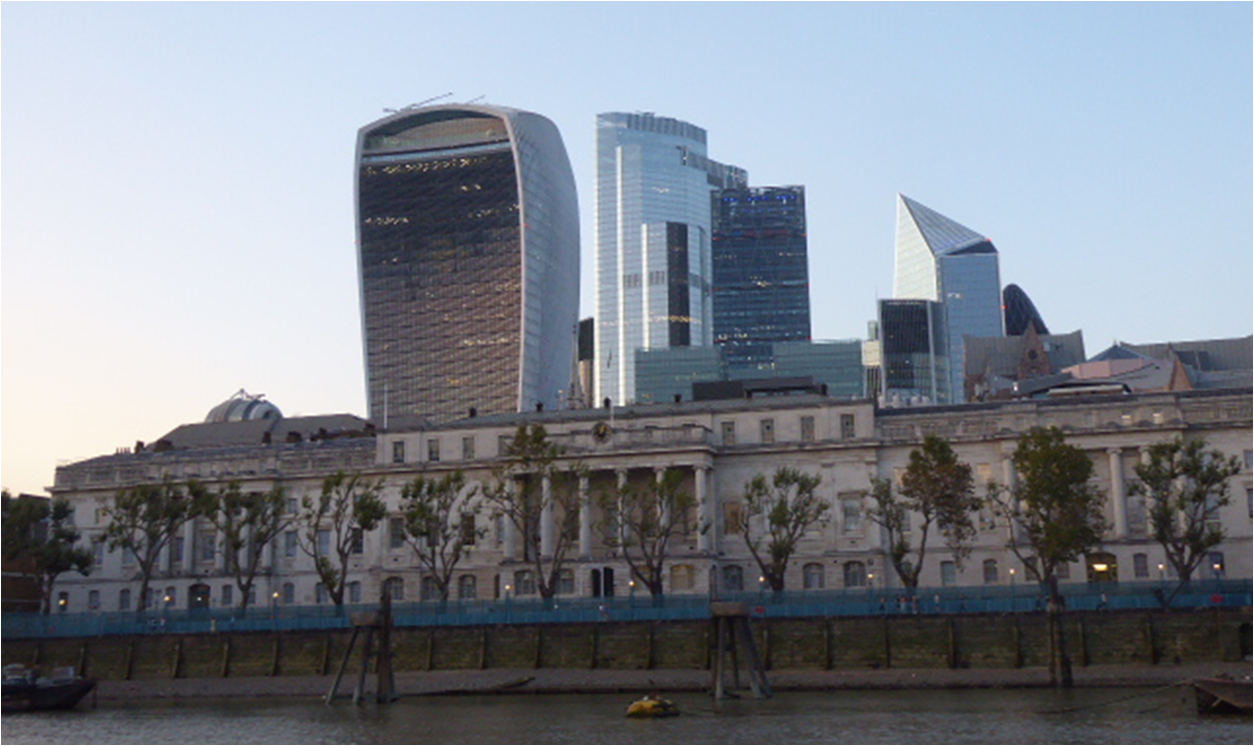
2020 is an appropriate time to review what the 2010s added to central London’s public realm and built heritage.
In the nineties and noughties a series of impressive additions were made to central London’s riverside, including in 1997 Shakespeare’s Globe, and in 2000 the Millennium Bridge (aka the Wobbly Bridge) and Tate Modern in the shell of the old Bankside power station. Also in 2000, the river terrace of Somerset House was opened up to the public for the first time. All except the Globe were free to enter.
In 2002, Norman Foster’s “glass testicle” (as Ken Livingstone called it) provided a sparkling new City Hall for the newly created Mayor of London, and new riverside public space on the formerly shabby waterfront next to Tower Bridge, directly across the river from the Traitors’ Gate of the Tower of London.
Good times. What was paying for it all? The stupendous volumes of money circulating in the City of London’s booming global capital markets. Architecturally, that era in the City is symbolised by Foster’s Gherkin, completed in 2003, rising up from the ashes of the Baltic Exchange, blown up by the IRA in 1992.
A lot of people view the austerity of the 2010s as an inevitable and richly deserved hangover for the excesses of the noughties prior to the great financial crash of 2008. But the 2010s were really the decade when the British public – via the public sector - took on the burden of bailing out the City. In the City itself the hangover and the regrets were short-lived. The City of London’s bankers and insurance brokers quickly returned to paying themselves gigantic bonuses and the developers resumed building glass palaces for them. The dream of hyper-efficient, infallible markets was over, and the core business became increasingly obviously about doing laundry for the world’s dirtiest money. The FIRE sector (finance, insurance, real estate) was back on its perch at the cocktail bar and snorting cocaine in the toilets for all it was worth.
In the spirit of The Gherkin, a series of increasingly bizarrely misshapen ‘hi-tech architecture’ glass towers with cockney cheeky chappy nicknames were churned out throughout the 2010s, including The Shard (2012), 122 Leadenhall (‘the Cheesegrater’) and 20 Fenchurch Street (‘the Walkie-Talkie’), both in 2014. All of them are owned by foreign private or sovereign wealth funds: Qatari, Canadian and Hong Kong respectively. As the rest of the country struggled under public sector austerity, in the space of two years London’s skyline was transformed as if by the landing of an alien space fleet.
By the second half of the 2010s, the dregs of the property development pipeline were emptying out. It was as if the developers had moved on to just taking the piss. Lazy attempts at ‘iconic’ mis-shapes, which had to invent their own cheeky nicknames, as Londoners had given up caring about them. The competition for the very worst is probably a tie between the ugly and banal ‘Scalpel’ (2018) and the ugly and banal One Blackfriars (also 2018), which can’t even decide whether it’s called ‘the Vase’ or ‘the Boomerang’.
The sorry climax to this era is probably represented by the anonymous but huge, Saudi-owned 22 Bishopsgate, which amusingly completely overshadows Richard Rogers’s cheesegrater (which presumably Rogers, if few others, thought was a serious piece of architecture). It was completed in early 2020 just in time for coronavirus to destroy the business model for expensive office space, especially that reliant on people getting to their desk by lifts. Allegedly, allowing for social distancing in the lifts, if everybody supposed to work in the building arrived at 9am, only 20% of them would beable to get to their desks before it was time for them to start queueing to come back down again to clock out for 5pm.
How much of the Saudis’ money is going to be lost on this stranded giant –now neither use nor ornament, as my grandma would have said? And who is going to dare to tell the Crown Prince and his men who carry the bonesaws?
Above the Below
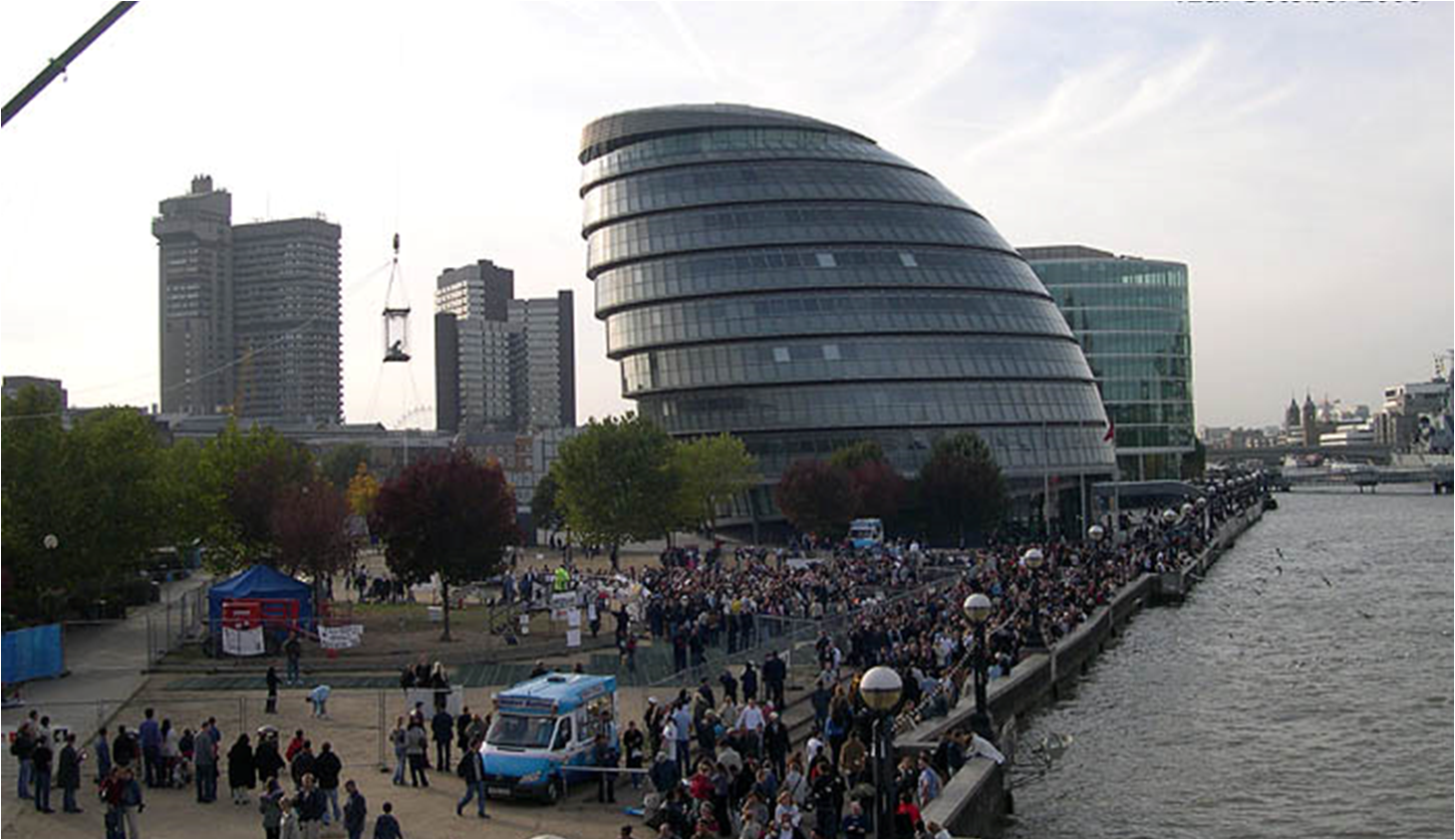
Has any good stuff come out of the 2010s? From the deck of the Thames Clipper, as we tied up at London Bridge City pier, I reflected.
The new Blackfriars station, with its platforms spanning the river, is a fabulous place to catch a train. Less visible from the river, so is the new London Bridge station, with its airy concourse and exciting re-use of undercroft brick arches. I even wondered whether I was warming to the Shard, after 8 years softening of the shock of its contribution of symbolic pure evil to the skyline. But I decided that in the future the period culminating in the 2012 London Olympics, will probably be remembered as London’s high point, and it was downhill after that.
Back in 2003 I was working in City Hall. For several evenings there was just me sitting alone on my floor of the glass testicle, and the performance artist David Blaine sitting in his perspex box, suspended by crane. Crowds had gathered on Potters Field to watch us both doing our thing. Or were they there just for Blaine? The challenge was to see whether you could hit Blaine’s box with something amusing. This was the era of the ladette, and the girls were just as lairy as the boys. One evening a guy showed up with golf clubs and teed off from the parapet of Tower Bridge. It felt like it was creative London at its best. That same buzz still existed in 2012.
Londoners got used to the idea of there being a new riverside plaything every year or so. Boris Johnson, who held the post of Mayor of London from 2008 to 2016, intended to make the ‘garden bridge’ the 2010s’ contribution to this tradition, and his legacy. The bridge was never built and the project collapsed in acrimony, amid accusations of contracts being handed out to cronies.
Now City Hall stands overshadowed by the three million square feet of the rest of the More London development, runner-up for the 2007 Carbuncle Cup. More London was bought by the Kuwaiti royal family in 2013 for £1.7 billion from the Bahamas-registered London Bridge Holdings, principally owned by Armenian businessman Dikran Izmirlian.
It’s a key base of the big four accountancy firm PricewaterhouseCoopers, with 10,000 of its 276,000 staff in 157 countries worldwide being based there and upriver at Embankment Place above Charing Cross station. At the present time, nearly all of the 10,000 are working from home.
City Hall was never owned by the Mayor of London, it was rented in a 20 year lease signed by the government and imposed on him. Current incumbent Mayor Sadiq Khan is the Kuwaitis’ tenant, and the £11m per year lease for City Hall is up in 2021, with the rent possibly to rise to £12.6m per year. He is threatening to move his Greater London Authority and the London Assembly to the distant Royal Docks, by London City Airport, with a decision to be taken in September 2020. Meanwhile, because of coronavirus and the collapse in fare revenues from TfL, the Greater London Authority is suddenly effectively bankrupt, whilst the elections for it in May 2020 were put off to May 2021.
It can probably safely be assumed that former Mayor Boris would enjoy seeing his successor sitting out in the Royal Docks as a diminished force. But would he ever dare announce plans to kill the whole institution off, as his predecessor as Prime Minister Maggie Thatcher did for the GLC? We shall see.
Canary in the mine
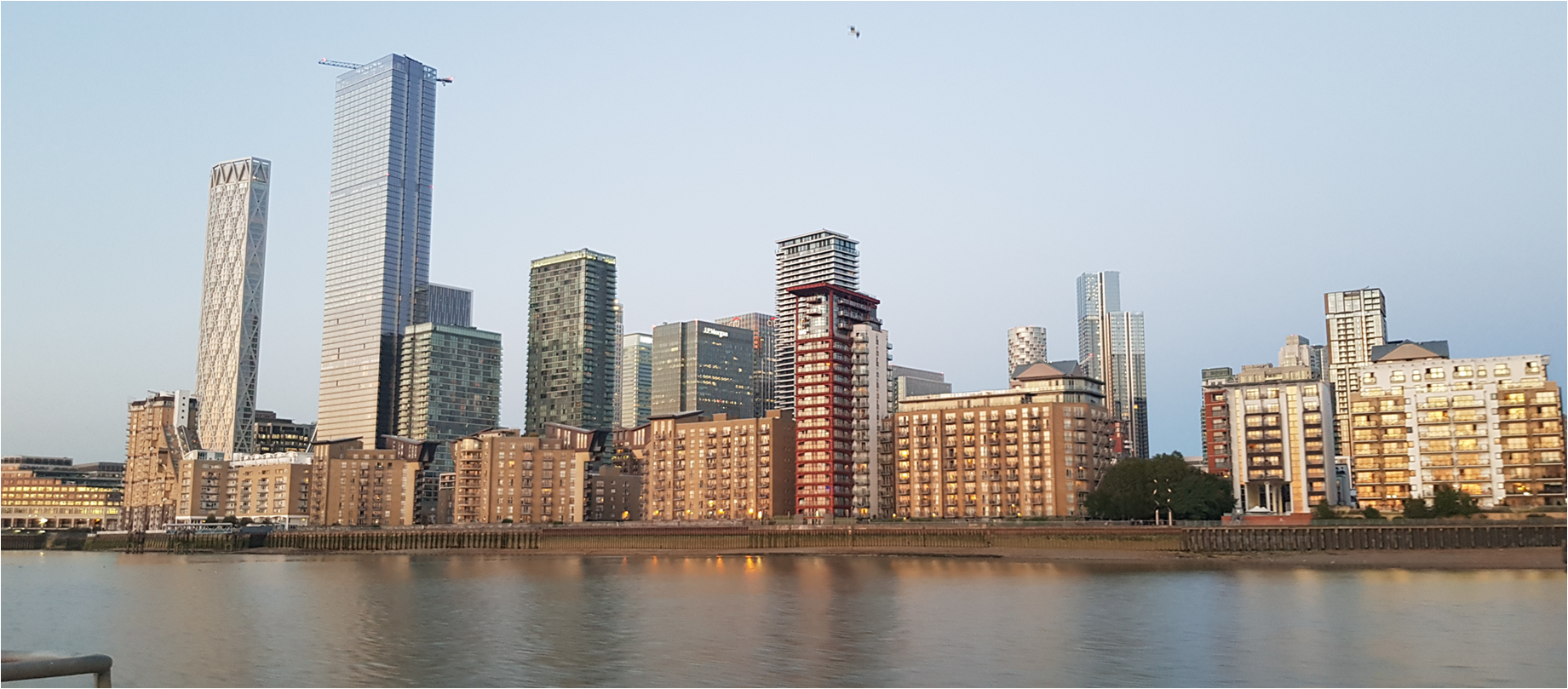
The Thames Clipper glided serenely under Tower Bridge and we entered the Docklands. The fleet of City Cruises open-top double deck sightseeing boats laid up in the Pool of London because of the lack of tourists in large numbers, made for a sad sight.
After passing some of the classic historic Wapping riverside taverns including The Town of Ramsgate, the Captain Kidd, and The Prospect of Whitby, the Thames Clipper’s master opened the throttle and showed what the catamaran can do, a burst of acceleration met with a gasp of delight from one of the passengers on board.
We called in at Canary Wharf. Unlike the central London, the 2010s have seen Canary Wharf mature rather well – to look at, anyway. The three big skyscrapers at the centre of the development, which always looked rather squat given how tall they were, have over the past 10 years been joined by a forest of other towers. They include many very tall residential towers, which are beautifully slender compared to the office towers. Perhaps because there is now so much residential mixed in with offices, there appeared to be plenty of people about, although we did not disembark to check that.
We agreed that the Manhattan-style skyline worked out here, in a way that it simply didn’t in the City. The tourists on board were clearly impressed, and were snapping away on their phone cameras. It reminded me of a time showing a Chinese delegation around London, who were not visibly impressed by anything they saw in London until they got to Canary Wharf, when they suddenly very much were.
However, I was struck by the same thoughts as ever when seeing Canary Wharf - that the financial sector, supposedly so skilful and vital for the efficient allocation of capital across the global economy, is particularly skilful at allocating capital to itself. In fact, Canary Wharf perfectly represents the grossest misallocation of global resources over the past 40 years, a misallocation during a time of global warming that will almost certainly now cost us our entire civilisation and planet.
After Greenwich darkness was quickly falling and Canary Wharf was lit up as we came up the Blackwall Reach and passed it for the second time, this time from the east. As we rounded the tight bend in the river, I looked out for the rather low key entrance to the East India Dock, the former operational base of the once-mighty British East India Company, and for the Trinity Buoy Wharf lighthouse, the former operational base of the lighthouses authority of England and Wales, now the home of Longplayer, the musical composition by Jem Finer (formerly of The Pogues) intended to play for one thousand years without any repetition.
Then the Dome and the Emirates Air-line cable car (a Boris Johnson grand projet that did get built) came into view and the catamaran pulled in to North Greenwich pier, where we disembarked.
The Dome of Discovery
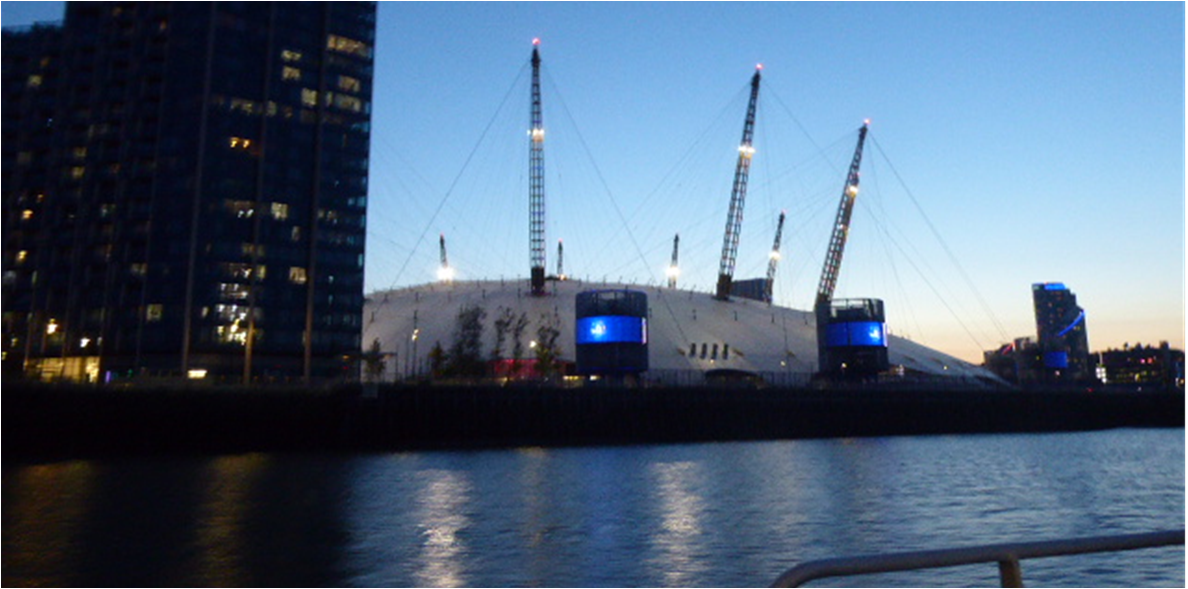
Though getting dark, it remained a balmy evening, albeit with a breeze blowing off the river, as there always seems to be this far into East London and so much closer to the North Sea.
Greenwich Peninsula was the site of the largest gasworks in Europe, made redundant by the arrival of North Sea natural gas. Its toxic soil and bleak aspect made it one of the greatest challenges for regeneration in East London. However, the scale of the site, and the blank canvas it presented, when allied to the arrival of the Jubilee Line extension in 1999, meant that a very large amount of residential development could be put on it (>10,000 new homes) – an important consideration in a city with a fast-growing population and a housing shortage.
The Millennium Dome was always a ruse to put the peninsula on the map – the government’s aim being to keep ‘pump-priming’ the site with public money until private investment in housebuilding became profitable, at which point it could step back and watch the scheme fly under its own power. It was a showcase for New Labour’s concept of ‘public-private partnership’, and was closely associated with Peter Mandelson, ‘the Dome Secretary’.
We had arrived without having done any prior research, and I was surprised to see that a lot had changed and things were clearly happening – a lot of new flats had been completed.
Back in the noughties, the main problem had been what to do with the redundant Millennium Dome. This was solved by turning it into the O2 entertainment complex, a kind of hellscape of the corporate leisure industry (and very New Labour): chain eateries offering a choice from Wagamama to Café Rouge for a meal, before being shepherded into the main arena for the main event, be that the masters’ tennis or a big rock gig. A ruthlessly efficient machine for separating punters from their money. The O2 is famously a pain to get to and home from, but it is a million times better than Wembley Arena, and so is broadly popular with Londoners.
I was expecting the area around the O2 to be a complete ghost town. With the venue closed, why would there be anybody there at all? I was wrong. The students of the Ravensbourne University of London, the design school which moved from Bromley to the peninsula in 2010, were saving the day. Although things were quiet, students and others - who looked like they may have been new residents of the peninsula - were out and about, and enjoying the evening.
What was the story behind all these new flats that are now finally being built, after many years of false starts? It turns out that ownership of the site has been flipped between various developers and now resides with the Hong Kong tycoon Henry Cheng’s company Knight Dragon, which appears to be willing to invest for the long term. It seems significant that capital assembled by City banks for British developers was incapable of doing the job, but oligarch money can.
But how many of the new flats are lived in and how many are unoccupied ‘buy to leave’ repositories for the savings of people from Hong Kong and elsewhere? The rest of the site was meant to be a mixed community. The problem has now moved on from ‘how do we get anybody to come to this godawful poisoned wasteland?’, to ‘what do London and Londoners actually get out of the development of the peninsula?’
The visionary Henry Cheng turns out not to be above a bit of skulduggery when it comes to ducking out of commitments to provide affordable social housing. Meanwhile, in terms of the New Labour legacy, Tony Blair and Peter Mandelson nowadays give the strong impression of bring mostly interested in the question, ‘how do I get a piece of the oligarch money action?’.
The tale of the peninsula also involves another great New Labour character in addition to the venal Mandelson. Away from the tip of the peninsula, always intended to be market-led ‘yuppie flats’, John Prescott tried to give developers a demonstration of how families with children could live well in flats by building the Millennium Village in the southeastern portion of the site, towards Charlton.
Ralph Erskine, the architect of the Byker Wall in Newcastle, was brought out of retirement to design it, as by 1999 there were no young British architects left who knew how to do a high density development suitable for young families. There is a nursery and primary school, shopping and social facilities,and ecological park on site. The Millennium Village has been a moderate success in itself, but it has not been copied by developers elsewhere on the peninsula, or indeed anywhere in England.
Time and Tide
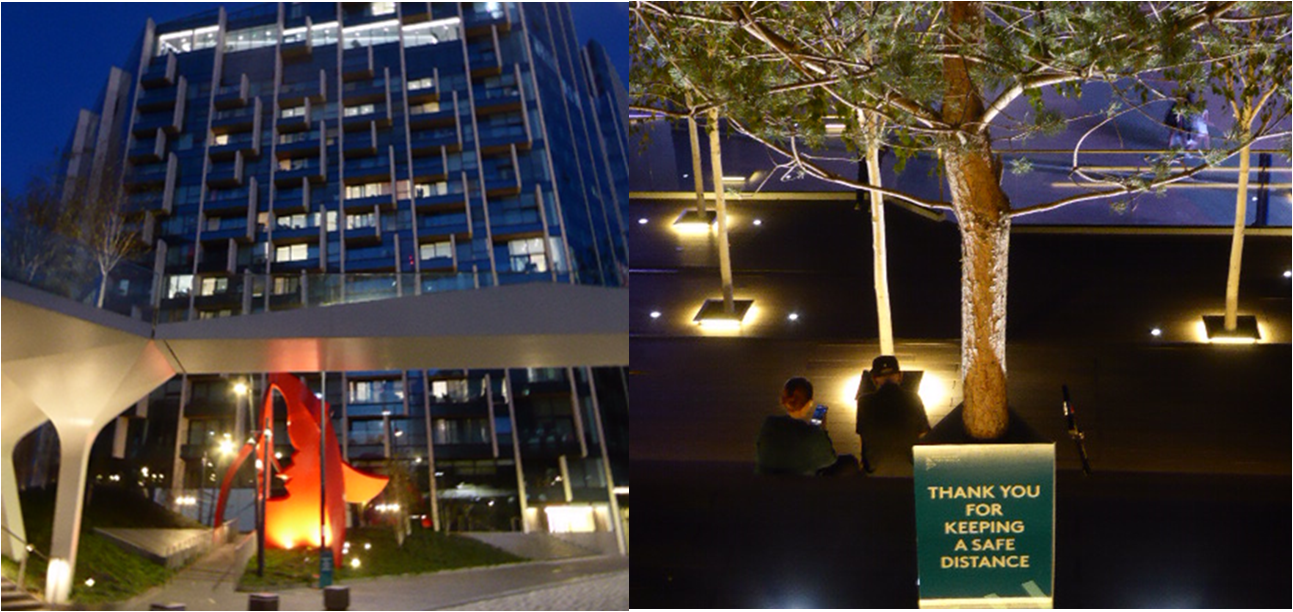
But it was now almost dark and there was no time to get down to that part of the peninsula. I was wondering what to explore instead when I spotted something new that I was unaware of – a garden bridge! Or to give it its proper name, The Tide - “a new, elevated riverside linear park”, which opened early in 2020. Clever Henry Cheng had evidently spotted that a corporate monoculture was not what sophisticated Londoners like me want. What we want is a new riverside playground every year and the garden bridge we were promised!
The footbridge is great: it looks good, with a pleasing kind of retro-modern styling, it has real trees and plants, it’s free to go on (which Boris’s garden bridge was not going to be) and, although it doesn’t cross the river, it does stretch to providing a good view out over it.
Then suddenly the bridge worked some magic: I realised that my quest had been successful - I had found Singapore-on-Thames! A place of some glamour to stand comparison with the real Singapore, if not in truth to rival it. Here, at last, 20 years after the millennium, was a 21st century place that looked like the futuristic environment we once imagined the 21st century would be. Here were the bright sunlit uplands promised by Boris Johnson – a place with confidence in itself, playing on the world stage, not constrained by the inward-looking Napoleonic continental system of the European Union. All that needed to be solved now was filling in those pesky details of precisely how levelling up would happen, and the whole country would be on its way to being great again!
The feeling lasted a moment, and then passed. Would I really want to live here? Would it really be possible to live a meaningful life and be part of building a meaningful community in a place that exists purely so it can be squeezed for more Hong Kong dollars for a man who already has 139 billion of them? In a place that is more battery farm than an ecosystem with niches for independent small businesses, and all the arts trimmings just so much PR bullshit? In a place which even if it delivered Civic Revival’s “well designed and curated” building block could never deliver its “genuine democracy” one? Of course not. Give me Lower Marsh any day, and if places like that are to be destroyed, then get me out of Singapore-on-Thames.
I thought I had the bridge to myself, but at the viewpoint at its end two students were sitting, framed by the view of the Thames: the illuminated cable cars in constant steady motion, and the flickering lights of Canary Wharf’s towers against the last of the twilight. They were looking at their phones. I looked one more time at the view, and then sat down and got my phone out too.
***
POST SCRIPT: OBITUARY
Which way is London going: golden goose, cuckoo, or dead parrot? One data point: sadly, just days after the expedition to Waterloo, the Ian Allan Bookshop in Lower Marsh announced its closure. The final closing down sale is on Saturday 26 September. It follows closure of the bookshop’s regional branches in Manchester, Birmingham and Cardiff in the period 2015-2019. It’s a sad day for the very British community of geeks and oddballs known as trainspotters.
We can’t speculate on the reason behind this particular decision, but it’s part of a wider ‘mass extinction event’ across small independent retail. Clearly, across the country there is the massive issue for small businesses that if trading income is greatly diminished, it is difficult to pay rent when it falls due. For many small businesses, a government loan is a different proposition to a rent payments holiday, and so many are just going to pack up instead.
What happens next? Landlords who have borrowed money against the great expectations of high rents will go bust and the banks will be left with a lot of commercial premises not worth as much as they thought they were. Will the level of write-offs required bring those banks down, or will they be given another bail out?
Owners who don’t owe money on their properties, and simply use them as a cash cow, will have to manage with lower incomes. Is that even a bad thing? It is hard to feel sympathy for London’s famously grasping and brutal commercial landlords. Many of London’s best independent businesses have given up in the face of landlords’ demands.
So, will a London commercial property crash damage the ‘real economy’? Or will the market mechanism lead to a moderation of rents, and a boost for dynamic entrepreneurs who want to set up new, interesting, and productive businesses in central London? We shall see.
